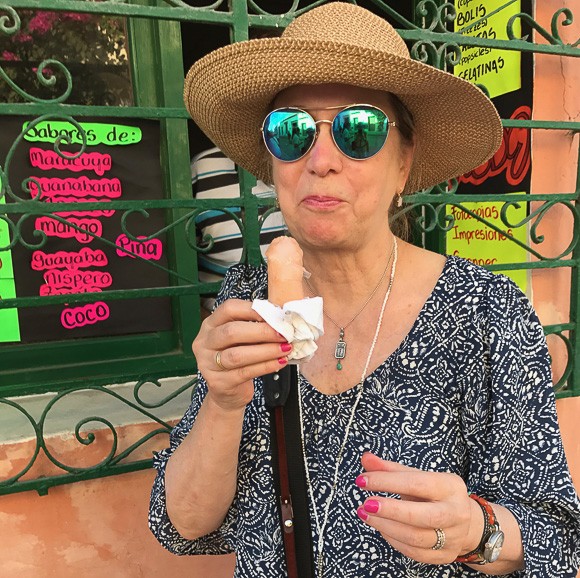Are you curious about the vibrant street food scene in Vietnam and whether it’s safe to indulge? At SIXT.VN, we understand your desire for authentic culinary experiences while prioritizing your well-being. Let’s explore the exciting world of Vietnamese street food, addressing your concerns and providing insights to ensure a delightful and safe gastronomic adventure. With SIXT.VN, you can confidently explore Vietnamese cuisine. Discover safe street food options, authentic culinary experiences, and reliable Vietnam travel services.
Contents
- 1. What Exactly Is Street Food?
- 2. Is Street Food Common in Vietnam?
- 3. What Types of Street Food Can I Find in Vietnam, Especially in Hanoi?
- 3.1. Phở (Noodle Soup)
- 3.2. Bún Chả (Grilled Pork with Noodles)
- 3.3. Bánh Mì (Vietnamese Sandwich)
- 3.4. Xôi (Sticky Rice)
- 3.5. Nem Rán/Chả Giò (Spring Rolls)
- 3.6. Bánh Cuốn (Steamed Rice Rolls)
- 3.7. Chè (Sweet Dessert Soup)
- 3.8. Cà Phê Trứng (Egg Coffee)
- 4. Is Vietnamese Street Food Safe to Eat?
- 4.1. Choose Popular Vendors
- 4.2. Observe Hygiene Practices
- 4.3. Opt for Hot, Freshly Cooked Food
- 4.4. Drink Bottled Water
- 4.5. Peel Fruits
- 4.6. Trust Your Gut
- 5. What Are the Potential Risks of Eating Unsafe Street Food?
- 5.1. Traveler’s Diarrhea
- 5.2. Food Poisoning
- 5.3. Hepatitis A
- 5.4. Parasitic Infections
- 5.5. Typhoid Fever
- 6. What Precautions Can I Take to Ensure Street Food Safety?
- 6.1. Pre-Trip Preparations
- 6.2. On-the-Ground Strategies
- 6.3. Post-Meal Care
- 7. How Can SIXT.VN Enhance My Street Food Experience in Vietnam?
- 7.1. Airport Transfers
- 7.2. Hotel Booking
- 7.3. Local Guides
- 7.4. Customized Tours
- 7.5. 24/7 Support
- 8. What Are Some Specific Examples of Safe Street Food Choices in Hanoi?
- 8.1. Phở (Noodle Soup)
- 8.2. Bún Chả (Grilled Pork with Noodles)
- 8.3. Xôi (Sticky Rice)
- 8.4. Bánh Mì (Vietnamese Sandwich)
- 9. How Can I Communicate My Dietary Needs or Allergies?
- 10. What If I Get Sick?
- 11. Expert Opinions on Street Food Safety
- 12. Tips from Fellow Travel Writers
- 13. Street Food Packing Essentials
- 13.1. Hand Sanitizer
- 13.2. Antibacterial Wipes
- 13.3. Probiotics
- 13.4. Imodium
- 13.5. Oral Rehydration Salts
- 14. Why Choose SIXT.VN for Your Vietnam Trip?
- 15. Hanoi Street Food Delights: A Deeper Dive
- 15.1. Phở: A National Treasure
- 15.2. Bún Chả: A Hanoi Staple
- 15.3. Bánh Mì: A Fusion Masterpiece
- 15.4. Chè: A Sweet Ending
- 16. Street Food Across Vietnam: A Regional Overview
- 16.1. Ho Chi Minh City (Saigon)
- 16.2. Hoi An
- 16.3. Hue
- 17. Street Food and Local Culture: An Intertwined Relationship
- 17.1. The Role of Markets
- 17.2. The Importance of Family Recipes
- 17.3. Street Food as a Social Gathering
- 18. Sustainable Street Food Practices: Supporting Local Communities
- 18.1. Locally Sourced Ingredients
- 18.2. Eco-Friendly Packaging
- 18.3. Fair Labor Practices
- 19. Top 5 Street Food Safety Myths Debunked
- Myth 1: Street Food Is Always Unsafe
- Myth 2: Only Locals Can Eat Street Food Safely
- Myth 3: All Street Food Is Spicy
- Myth 4: Street Food Is Only for Budget Travelers
- Myth 5: Packaged Food Is Always Safer
- 20. How SIXT.VN Ensures Your Safety: A Step-by-Step Guide
- 20.1. Partnering with Trusted Vendors
- 20.2. Providing Clear Information
- 20.3. Offering 24/7 Support
- 20.4. Encouraging Feedback
- 20.5. Staying Updated on Safety Guidelines
- 21. Planning Your Street Food Adventure with SIXT.VN
- 21.1. Visit Our Website
- 21.2. Contact Us
- 21.3. Book Your Services
- 21.4. Prepare for Your Trip
- 21.5. Enjoy Your Adventure!
- 22. Frequently Asked Questions (FAQs) About Vietnamese Street Food Safety
- 22.1. Is it safe to eat street food in Vietnam?
- 22.2. What are the most common health risks associated with street food?
- 22.3. How can I avoid getting sick from street food?
- 22.4. What should I do if I get sick while traveling in Vietnam?
- 22.5. Are there any specific dishes I should avoid?
- 22.6. How can I communicate my dietary needs or allergies?
- 22.7. Can SIXT.VN help me find safe street food options?
- 22.8. What are some essential items to pack for a street food adventure?
- 22.9. Is it better to eat at a restaurant or street food stall?
- 22.10. How can I support sustainable street food practices?
- Conclusion: Embrace the Flavors of Vietnam with Confidence
1. What Exactly Is Street Food?
Street food, by definition, is ready-to-eat food and drinks sold by vendors in public locations like streets, markets, and parks. It’s often served from portable booths, carts, or trucks, offering immediate consumption. According to the Food and Agriculture Organization, over 2.5 billion people worldwide enjoy street food daily.
While concerns about safety exist, studies suggest contamination rates are comparable to restaurants. Knowledge and precautions are key for travelers to enjoy street food safely.
 Vietnamese street food vendor
Vietnamese street food vendor
2. Is Street Food Common in Vietnam?
Yes, street food is incredibly common in Vietnam, especially in bustling cities like Hanoi. It’s an integral part of Vietnamese culture and daily life. You’ll find vendors on nearly every street corner, offering a wide variety of dishes at affordable prices.
3. What Types of Street Food Can I Find in Vietnam, Especially in Hanoi?
Hanoi’s street food scene is a culinary paradise. Here are some must-try dishes:
3.1. Phở (Noodle Soup)
The most iconic Vietnamese dish. A flavorful broth with rice noodles, herbs, and your choice of beef (phở bò) or chicken (phở gà).
3.2. Bún Chả (Grilled Pork with Noodles)
Grilled pork patties served with rice noodles, fresh herbs, and a dipping sauce. A Hanoi specialty.
3.3. Bánh Mì (Vietnamese Sandwich)
A crispy baguette filled with various ingredients like pate, cold cuts, pickled vegetables, and chili.
3.4. Xôi (Sticky Rice)
Savory or sweet sticky rice, often topped with meat, beans, or corn.
3.5. Nem Rán/Chả Giò (Spring Rolls)
Deep-fried spring rolls filled with meat, vegetables, and vermicelli noodles.
3.6. Bánh Cuốn (Steamed Rice Rolls)
Thin, steamed rice rolls filled with ground pork and mushrooms, served with a dipping sauce.
3.7. Chè (Sweet Dessert Soup)
A variety of sweet soups with different ingredients like beans, tapioca, and fruits.
3.8. Cà Phê Trứng (Egg Coffee)
A unique Hanoi specialty. Strong coffee topped with a creamy egg yolk custard.
 Bún Chả – A Hanoi Specialty
Bún Chả – A Hanoi Specialty
4. Is Vietnamese Street Food Safe to Eat?
Generally, yes, but it requires caution. While most vendors adhere to hygiene standards, food safety risks exist. According to the World Health Organization, foodborne diseases are a global concern, particularly in developing countries. Travelers’ diarrhea, caused by consuming contaminated food or water, affects 30-70% of travelers.
Here are some tips to minimize risks:
4.1. Choose Popular Vendors
Look for stalls with many locals. High turnover means fresher ingredients.
4.2. Observe Hygiene Practices
Ensure the vendor handles food with clean utensils and has a clean workspace.
4.3. Opt for Hot, Freshly Cooked Food
Avoid food that has been sitting out for extended periods.
4.4. Drink Bottled Water
Avoid ice in drinks unless you’re sure it’s made from purified water.
4.5. Peel Fruits
Avoid eating the skin of fruits.
4.6. Trust Your Gut
If something seems off, don’t eat it.
5. What Are the Potential Risks of Eating Unsafe Street Food?
Eating unsafe street food can lead to various health issues, including:
5.1. Traveler’s Diarrhea
The most common ailment, caused by bacteria like E. coli.
5.2. Food Poisoning
Caused by bacteria like Salmonella or Staphylococcus aureus.
5.3. Hepatitis A
A viral infection that affects the liver, spread through contaminated food and water.
5.4. Parasitic Infections
Such as Giardia or Cryptosporidium, from contaminated water or food.
5.5. Typhoid Fever
A bacterial infection spread through contaminated food and water.
6. What Precautions Can I Take to Ensure Street Food Safety?
Here’s a detailed list of precautions:
6.1. Pre-Trip Preparations
- Consult Your Doctor: Discuss vaccinations and necessary medications.
- Travel Insurance: Ensure you have coverage for medical emergencies.
- Probiotics: Start taking probiotics a few weeks before your trip to boost your gut health.
6.2. On-the-Ground Strategies
- Food Tours: Join a guided food tour to learn from local experts.
- Eat During Peak Hours: Food is fresher when vendors are busy.
- Ask Locals for Recommendations: They know the best and safest spots.
- Observe Cooking Practices: Ensure food is cooked thoroughly.
- Check Water Source: Be wary of tap water and ice.
- Use Hand Sanitizer: Clean your hands before eating.
- Avoid Raw Vegetables: Unless you can peel them yourself.
- Be Cautious with Sauces: Especially if they’ve been sitting out.
6.3. Post-Meal Care
- Stay Hydrated: Drink plenty of bottled water.
- Monitor Your Health: If you experience any symptoms, seek medical attention.
7. How Can SIXT.VN Enhance My Street Food Experience in Vietnam?
SIXT.VN offers a range of services to make your culinary journey in Vietnam seamless and safe:
7.1. Airport Transfers
Start your trip stress-free with our reliable airport transfer services.
7.2. Hotel Booking
Choose from a curated selection of hotels with high hygiene standards.
7.3. Local Guides
Hire a local guide to discover hidden culinary gems and ensure your safety.
7.4. Customized Tours
Enjoy tailored food tours with trusted vendors.
7.5. 24/7 Support
Our team is available around the clock to assist with any concerns.
8. What Are Some Specific Examples of Safe Street Food Choices in Hanoi?
While safety always depends on the vendor, some dishes are generally safer due to their cooking methods:
8.1. Phở (Noodle Soup)
The broth is boiled, and meat is cooked thoroughly.
8.2. Bún Chả (Grilled Pork with Noodles)
The pork is grilled at high temperatures.
8.3. Xôi (Sticky Rice)
Steamed and often served hot.
8.4. Bánh Mì (Vietnamese Sandwich)
Choose vendors with fresh ingredients and clean preparation areas.
9. How Can I Communicate My Dietary Needs or Allergies?
- Translation Cards: Carry cards in Vietnamese explaining your allergies or dietary restrictions.
- Learn Basic Phrases: Knowing a few phrases like “Tôi bị dị ứng…” (I am allergic to…) can be helpful.
- Use Visual Aids: Pictures can help communicate your needs.
10. What If I Get Sick?
- Seek Medical Attention: Don’t hesitate to visit a clinic or hospital.
- Inform SIXT.VN: We can assist with finding medical care and translation services.
- Stay Hydrated: Drink plenty of fluids and electrolytes.
11. Expert Opinions on Street Food Safety
According to Dr. Wink Weinberg, an infectious disease expert, “Street food is an integral part of the travel experience, but precautions are necessary. Focus on cooked foods and be mindful of hygiene.”
12. Tips from Fellow Travel Writers
Daryl and Mindy Hirsch from 2foodtrippers recommend looking for vendors with long lines and clean workstations. “Locals know the best food, and that’s what we want to eat too,” they say.
13. Street Food Packing Essentials
Pack these items to enhance your street food experience:
13.1. Hand Sanitizer
Keep your hands clean.
13.2. Antibacterial Wipes
For utensils and surfaces.
13.3. Probiotics
Support your gut health.
13.4. Imodium
For emergencies.
13.5. Oral Rehydration Salts
To replenish electrolytes.
14. Why Choose SIXT.VN for Your Vietnam Trip?
SIXT.VN is your trusted partner for exploring Vietnam safely and conveniently. We offer:
- Reliable Services: From airport transfers to customized tours.
- Expert Local Knowledge: Discover hidden gems and authentic experiences.
- 24/7 Support: We’re always here to assist you.
- Commitment to Safety: We prioritize your well-being.
15. Hanoi Street Food Delights: A Deeper Dive
Let’s explore some specific Hanoi street food dishes in more detail:
15.1. Phở: A National Treasure
Phở is more than just a soup; it’s a culinary symbol of Vietnam. The broth is simmered for hours with bones and spices, creating a rich and aromatic base.
Variations:
- Phở Bò (Beef): The most popular choice, with thinly sliced beef.
- Phở Gà (Chicken): A lighter option with tender chicken.
- Phở Chay (Vegetarian): Made with vegetable broth and tofu.
Where to Find It:
- Phở 10 Lý Quốc Sư: A famous spot with long queues.
- Phở Gia Truyền Bát Đàn: Known for its traditional recipe.
15.2. Bún Chả: A Hanoi Staple
Bún chả is a must-try when in Hanoi. The combination of grilled pork, noodles, and fresh herbs is simply irresistible.
How to Eat It:
- Dip the noodles and herbs into the dipping sauce.
- Eat the grilled pork separately or add it to the bowl.
Where to Find It:
- Bún Chả Hương Liên (Obama Bún Chả): Made famous by President Obama’s visit.
- Bún Chả Đắc Kim: A local favorite with delicious grilled pork.
15.3. Bánh Mì: A Fusion Masterpiece
Bánh mì is a testament to Vietnam’s culinary creativity. It combines French bread with Vietnamese flavors.
Popular Fillings:
- Pate: A savory spread made from liver.
- Thịt Nguội (Cold Cuts): A variety of sliced meats.
- Dưa Chuột (Cucumber): Adds a refreshing crunch.
- Đồ Chua (Pickled Vegetables): Provides a tangy flavor.
- Ớt (Chili): For those who like it spicy.
Where to Find It:
- Bánh Mì Phố Cổ: A popular spot in the Old Quarter.
- Bánh Mì 25: Known for its delicious and affordable bánh mì.
15.4. Chè: A Sweet Ending
Chè is a diverse category of sweet dessert soups that are perfect for cooling down on a hot day.
Popular Types:
- Chè Đậu Xanh (Mung Bean Sweet Soup): A classic choice.
- Chè Thái (Thai Sweet Soup): With a variety of fruits and jellies.
- Chè Bắp (Corn Sweet Soup): A simple yet satisfying dessert.
Where to Find It:
- Chè 4 Mùa: A popular chè spot with a wide variety of options.
- Chè Thập Cẩm Hàng Cân: Known for its colorful and flavorful chè.
16. Street Food Across Vietnam: A Regional Overview
While Hanoi is a street food hotspot, other regions of Vietnam offer unique culinary experiences:
16.1. Ho Chi Minh City (Saigon)
- Bánh Xèo (Crispy Pancake): A savory pancake filled with shrimp, pork, and bean sprouts.
- Gỏi Cuốn (Fresh Spring Rolls): Rice paper rolls with vermicelli noodles, shrimp, and herbs.
16.2. Hoi An
- Cao Lầu (Hoi An Noodles): Unique noodles with pork, greens, and crispy croutons.
- Bánh Mì Phượng: Arguably the best bánh mì in Vietnam.
16.3. Hue
- Bún Bò Huế (Hue Beef Noodle Soup): A spicy and flavorful noodle soup.
- Bánh Bèo (Steamed Rice Cakes): Small rice cakes topped with shrimp and pork cracklings.
17. Street Food and Local Culture: An Intertwined Relationship
Street food is deeply ingrained in Vietnamese culture. It’s a social activity, a way to connect with locals, and a window into the country’s history and traditions.
17.1. The Role of Markets
Markets are hubs of street food activity. You’ll find vendors selling everything from fresh produce to cooked meals.
17.2. The Importance of Family Recipes
Many street food vendors use recipes passed down through generations.
17.3. Street Food as a Social Gathering
Street food stalls are often gathering places for locals to chat and enjoy a meal together.
18. Sustainable Street Food Practices: Supporting Local Communities
When enjoying street food, consider supporting vendors who use sustainable practices:
18.1. Locally Sourced Ingredients
Choose vendors who use fresh, local ingredients.
18.2. Eco-Friendly Packaging
Look for vendors who use biodegradable or reusable packaging.
18.3. Fair Labor Practices
Support vendors who treat their employees fairly.
19. Top 5 Street Food Safety Myths Debunked
Let’s address some common misconceptions about street food safety:
Myth 1: Street Food Is Always Unsafe
Fact: While risks exist, many vendors maintain high hygiene standards.
Myth 2: Only Locals Can Eat Street Food Safely
Fact: With precautions, anyone can enjoy street food safely.
Myth 3: All Street Food Is Spicy
Fact: Many dishes are mild or can be customized to your spice preference.
Myth 4: Street Food Is Only for Budget Travelers
Fact: Street food is enjoyed by people of all income levels.
Myth 5: Packaged Food Is Always Safer
Fact: Even packaged food can be contaminated.
20. How SIXT.VN Ensures Your Safety: A Step-by-Step Guide
SIXT.VN takes several steps to ensure your safety when booking services:
20.1. Partnering with Trusted Vendors
We carefully vet our partners to ensure they meet our safety standards.
20.2. Providing Clear Information
We provide detailed information about our services and safety protocols.
20.3. Offering 24/7 Support
Our team is available to assist with any concerns.
20.4. Encouraging Feedback
We encourage customers to provide feedback so we can continuously improve our services.
20.5. Staying Updated on Safety Guidelines
We stay informed about the latest safety guidelines and recommendations.
21. Planning Your Street Food Adventure with SIXT.VN
Ready to embark on a culinary journey through Vietnam? Here’s how SIXT.VN can help:
21.1. Visit Our Website
Explore our range of services and destinations. Address: 260 Cau Giay, Hanoi, Vietnam. Website: SIXT.VN.
21.2. Contact Us
Get in touch with our team for personalized recommendations. Hotline/Whatsapp: +84 986 244 358.
21.3. Book Your Services
Secure your airport transfer, hotel, and tours with ease.
21.4. Prepare for Your Trip
Follow our safety tips and pack your essentials.
21.5. Enjoy Your Adventure!
Immerse yourself in the flavors and culture of Vietnam.
22. Frequently Asked Questions (FAQs) About Vietnamese Street Food Safety
22.1. Is it safe to eat street food in Vietnam?
Yes, with precautions. Choose popular vendors, observe hygiene, and opt for hot, freshly cooked food.
22.2. What are the most common health risks associated with street food?
Traveler’s diarrhea, food poisoning, hepatitis A, parasitic infections, and typhoid fever.
22.3. How can I avoid getting sick from street food?
Follow our safety tips, including pre-trip preparations and on-the-ground strategies.
22.4. What should I do if I get sick while traveling in Vietnam?
Seek medical attention, inform SIXT.VN, and stay hydrated.
22.5. Are there any specific dishes I should avoid?
Be cautious with raw seafood, uncooked vegetables, and sauces that have been sitting out.
22.6. How can I communicate my dietary needs or allergies?
Carry translation cards, learn basic phrases, and use visual aids.
22.7. Can SIXT.VN help me find safe street food options?
Yes, we partner with trusted vendors and offer customized food tours.
22.8. What are some essential items to pack for a street food adventure?
Hand sanitizer, antibacterial wipes, probiotics, Imodium, and oral rehydration salts.
22.9. Is it better to eat at a restaurant or street food stall?
Both have their pros and cons. Street food offers a more authentic experience, while restaurants may have higher hygiene standards.
22.10. How can I support sustainable street food practices?
Choose vendors who use locally sourced ingredients, eco-friendly packaging, and fair labor practices.
Conclusion: Embrace the Flavors of Vietnam with Confidence
Vietnamese street food is an unmissable culinary adventure. By following our safety tips and partnering with SIXT.VN, you can confidently explore the vibrant flavors of Vietnam while prioritizing your well-being. Let us help you create unforgettable memories and savor the authentic tastes of this incredible country. Contact SIXT.VN today to book your airport transfer, hotel, and tailored tours. With SIXT.VN by your side, you’ll experience the best of Vietnam with confidence and peace of mind. Start planning your culinary adventure today!






